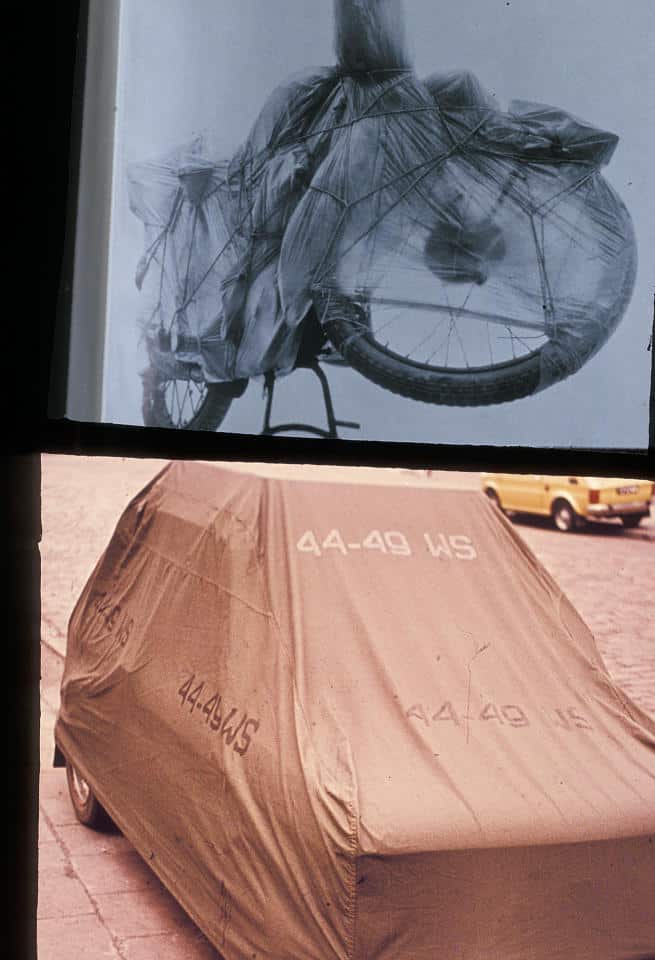“It is difficult to realise the rational reasons and remember the impulses which made me engage in this profession. I lay the decision on some sort of private metaphysics of fate, which made me start practising plastic arts.”[1] This is how Władysław Hasior begins his Thoughts on art. “Private metaphysics of fate.” Maybe. Someone else might call it an “inner need”, or simply “talent”. Whatever the mechanism was, it made Hasior a true artist, an extraordinary creator, a person impossible to overlook.
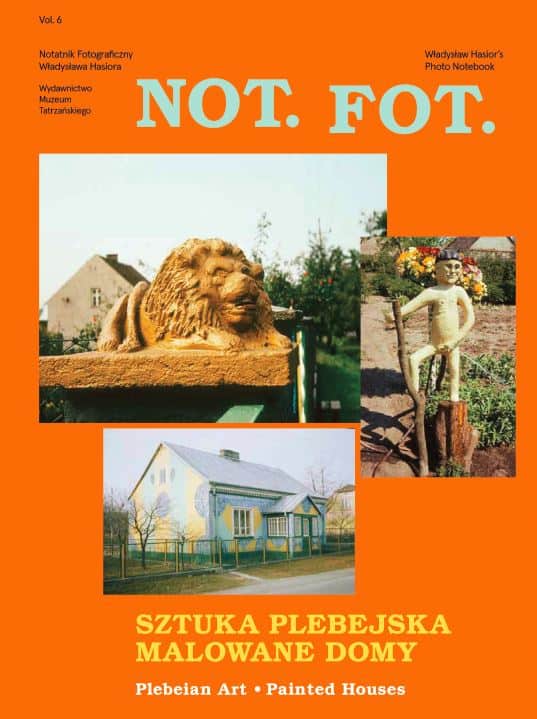
Cover of the 6th issue of the NOT.FOT. magazine
Browsing through archives at the Władysław Hasior’s Gallery, a branch of the Tatra Museum in Zakopane, Poland, one can find a collection of commemorative books from the Gallery. On their pages words of praise and hatred are mixed together. Some viewers of Hasior’s art admire his work, praise him and even thank him for showing them a different perspective on reality. Others criticise the level of drama in his art, the bluntness of the message, and even consider the artist mad. Reading the entries confirmed to me that Hasior’s art has a unique and strong influence. His artworks, even if not fully understood, are memorable; they force the recipient to search, analyse and learn more.
Władysław Hasior was born in 1928 in the small town of Nowy Sacz, Poland, where he spent the first years of his life. His adventures in Zakopane started in 1947 when he enrolled in the Secondary School for Visual Art Techniques. Some years later, after becoming an educated artist, he went back to the school and took up teaching. In an interview, Hasior once said about Zakopane and the time spent at the school:
You know what Zakopane meant for Polish culture… However, I went back there instinctively rather than after some reasoning. Moreover, Kenar[2], an extraordinary man. I worked with him for a year at the school where I taught. He would repeat: seeing more means knowing more. I started to look at this amazing land, its lively, vibrant culture. God! How much is happening here![3]

Slide from the Painted Houses cycle
In the years 1952-1958 Hasior studied in the studio of Prof. Marian Wnuk in the Sculpture Department of the Warsaw Academy of Fine Arts. In the early 1970s he was a teacher at the State School of Fine Arts in Wrocław. In 1959 he went on an artistic journey across Europe funded by the French Ministry of Culture. He managed to open his own gallery in Zakopane in 1985. After the artist’s death in 1999, following his last will, the Tatra Museum came into possession of Hasior’s entire legacy and brought it together at the Gallery in his name, which continues to function as a branch of the Museum to this day.
In 2014 art historians and theoreticians met in Zakopane at the Tatra Conference to learn about Zakopane, the local artistic colony and nature surrounding the city, but it was Hasior who became the centre of the intellectual debate. One of the topics of the conference was Hasior’s Photo Notebook, a collection of slides that interested young art researcher Ewa Tatar. Hasior’s slides have so far been a relatively rarely discussed aspect of the artist’s work and just like the other manifestations of Hasior’s artistic activity the viewer of these works could not remain indifferent.
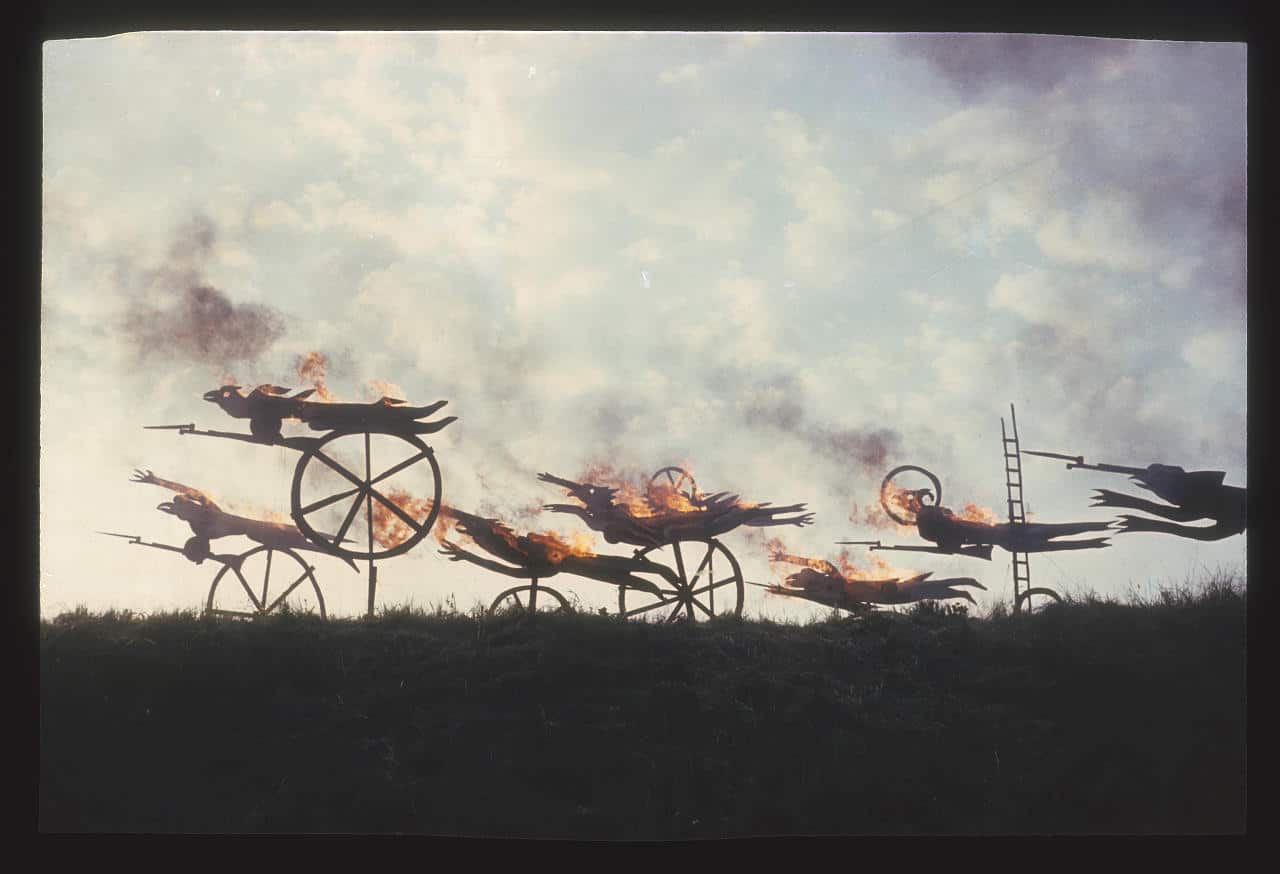
Slide from the Monuments and Birds cycle, example of Hasior documenting his work
Ewa Tatar’s lecture at the conference resulted in further cooperation with the Tatra Museum and a curatorial project called Environment in 2015. The fruit of this collaboration is also the cyclical publication of Hasior’s slides on the website of the Museum of Modern Art in Warsaw (MSN), under the Artists Archives section[4]. In December 2015, on the MSN website, the first excerpt from the artist’s collection of more than 20,000 photographs appeared – slides from the cycles of Plebeian Art and Roadside Poetry. The cooperation of MSN with the Tatra Museum continues, and the subsequent sets of the Photo Notebook are being published. This collection, however, requires commentary and contextualization, so when the idea of publishing the slides in the form of a printed publication appeared, it was gladly welcomed by the Tatra Museum. The project was created and made by several enthusiasts of Hasior’s creativity, people associated with the Polish and foreign artistic milieu, who to a lesser or greater extent had already dealt with the work of Władysław Hasior. Since 2017 six issues of NOT.FOT. Władysław Hasior’s Photo Notebook have been published and the collection of amazing, and relatively unknown, photographs have been made available to a wider audience.
Hasior started taking photos in the 1960s and continued to do so until his death in 1999. Hasior didn’t approach it as a big project at first. He was observing the world around him and capturing the things that interested or inspired him, whether it was an ordinary object, a natural phenomenon or an expression of the human need to decorate and beautify his surroundings. It was later that he discovered that his photos were forming thematic cycles. In the end, the Notebook collection consists of almost 400 different sets arranged by the artist in a thought-out order. Apart from being a sketchbook of sorts, Hasior’s photo collection served in his educational work and during meetings with students and other audiences, which he has organised in the “community centre”, as he facetiously called his studio. During the so-called “Cinema”, selected cycles from the Notebook were presented, accompanied by the artist’s lecture on a given topic.

Slide from the Trees cycle
The topic of the cycles are diverse. From cross-sectional themes from the history of art, clearly meant for educational purposes, such as Man’s Portrait Through the Ages, From Venus to Madonna, Contemporary Sculpture, Architectural Monuments, Machines in 20th Century Art; through specific motifs in art, e.g. Swords, Triangles, Wings, Crosses, Horses; to topics that interested the artist in the world around him, including Scarecrows, Painted Houses, Trees, Rhythms, Matter. Additionally, the collection is a photographic documentation of a world that is no longer; Hasior has captured the reality of the People’s Poland: the monuments (Polish Monuments cycles), propaganda slogans (Roadside Poetry), people’s attempts to escape into a better world expressed in their household decorations and naive art (Plebeian Art).
Hasior was documenting his own works and artistic projects as well – his banners and assemblages, performances and happenings, pieces created only to be used as film props. For example, the cycles titled Burning Sculptures, Totems or Film TV contain photos of his signature flaming monuments and “sculptures cast in earth” (Hasior’s own sculpting technique). Chariot of the Sun shows the step-by-step process of creating the monument of the same title in Södertälje, Sweden – a pack of horses cast in earth running down a hill by the Maren lake.
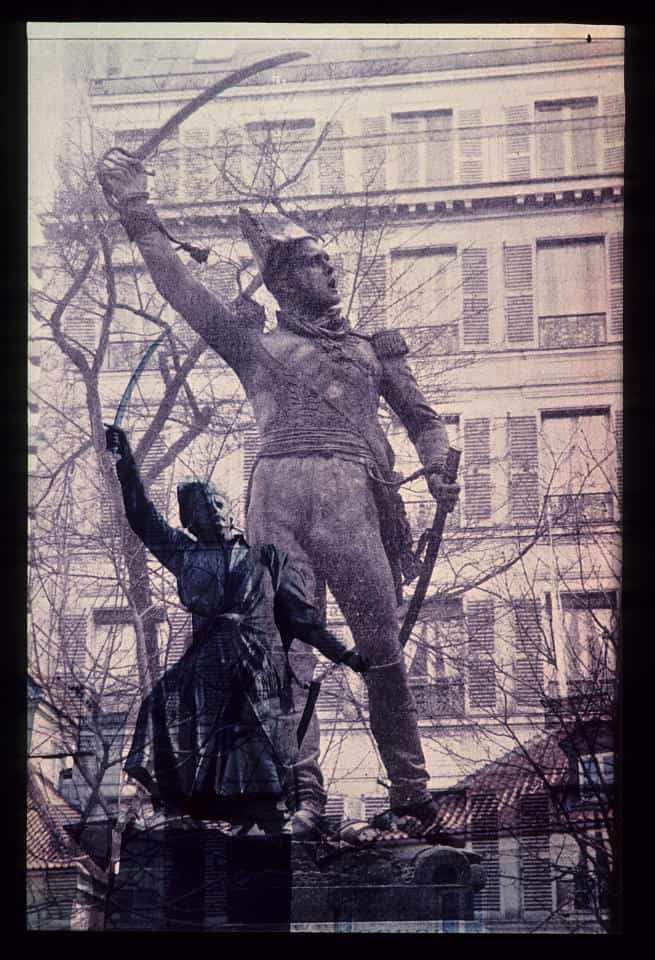
Slide from the Polish Monument cycle
What is unusual about Władysław Hasior is how generously he shared his inspirations, thoughts and techniques. He wasn’t keeping his working process to himself, but rather, talked willingly about what he meant by particular pieces and what he found interesting about objects or situations he photographed. In the aforementioned “Cinema” he was passing on his knowledge, opening his process to those who wanted to listen. Thanks to recordings of the meetings at the “community centre”, which are located in the Tatra Museum archive in Zakopane, and to films and TV programmes such as “One on One with…” the Photo Notebook can be more accurately described and analysed. As art historian Łukasz Gorczyca said, “Through slides, Hasior interpreted his own art (and art done by others), its contents and inspirations, but first and foremost he imposed a peculiar, ambivalent optics on the perception and interpretation of reality”[5].
Footnote:
NOT.FOT. Władysław Hasior’s Photo Notebook is a serial publication of Hasior’s diapositives in a unique and unprecedented form combining a reliable museum catalogue with a modern art magazine. NOT.FOT. invites an international group of curators, art historians and artists to discus and share this unique photographical archive. Each issue of the magazine presents a selection of slides accompanied by texts that give it context and explain its nature and function. In addition each issue presents a contemporary artist whose work is related to Hasior’s art. The magazine is an invitation to the world of one of the most complex Polish artists of the 20th century, an attempt to arouse “sparks of the imagination” that, according to Hasior, lie dormant in each of us.
Written by Joanna Trznadel
Edited by Lisa Barham
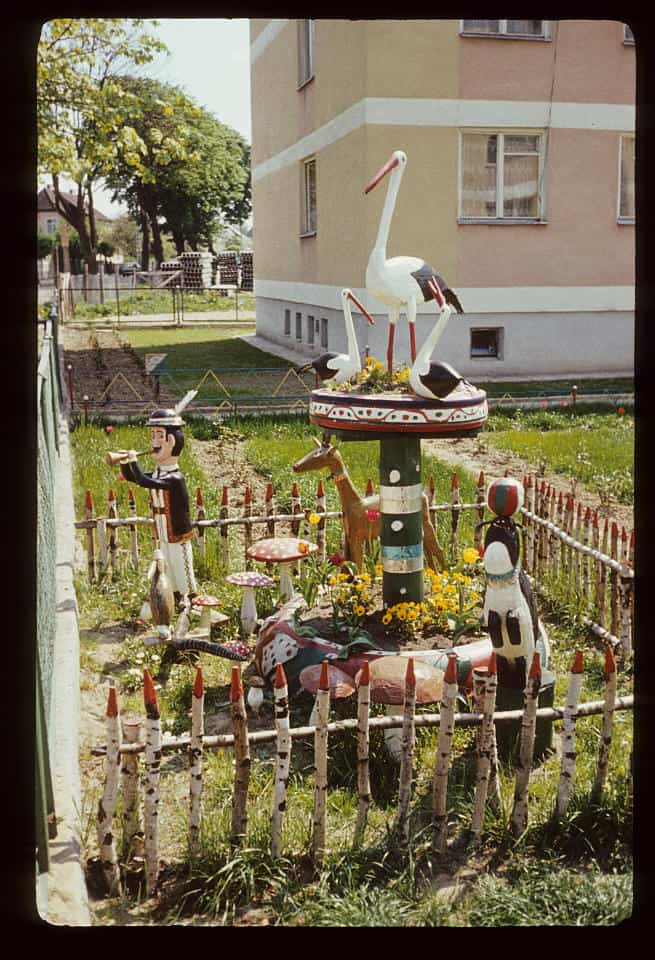
Slide from the Plebeian Art cycle
[1] Władysław Hasior, Myśli o sztuce, 1986, Nowy Sącz: Sądecka Oficyna Wydawnicza, p. 3.
[2] Antoni Kenar – Polish sculptor, educator, director of the State High School of Art Techniques in Zakopane in the years 1954-1959, Hasior’s mentor. He undertook a profound reform of the teaching system, combining creative freedom, respect for the folk art tradition, proficient knowledge of the workshop as well as orientation in the trends of contemporary art.
[3] Aleksander Jackowski, O sztuce plebejskiej. Spotkanie pierwsze: Tęsknota za pięknem „Czyńmy Polskę coraz piękniejszą”, Konteksty. Polska Sztuka Ludowa, 3-4, 1995, p. 181.
[4] https://artmuseum.pl/pl/archiwum/notatniki-fotograficzne-wladyslawa-hasiora/o-archiwum
[5] Łukasz Gorczyca, Notebook and montages, NOT.FOT. Władysław Hasior’s Photo Notebook, vol. 1, Zakopane: The Tatra Museum, 2017, p. 73.
Slide from the Matter cycle, example of combinig contemporary art with natural phenomenon
Slide from the Objects cycle




